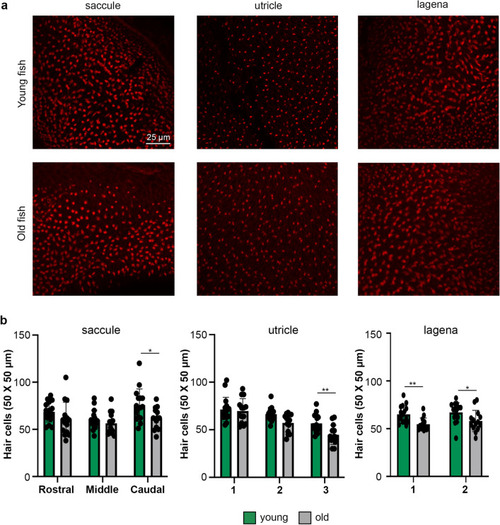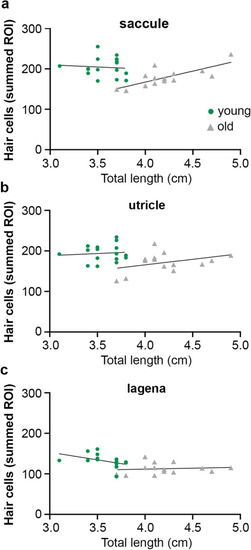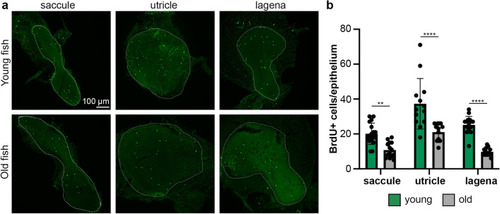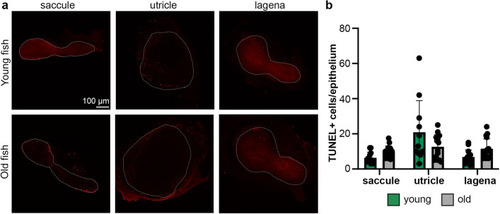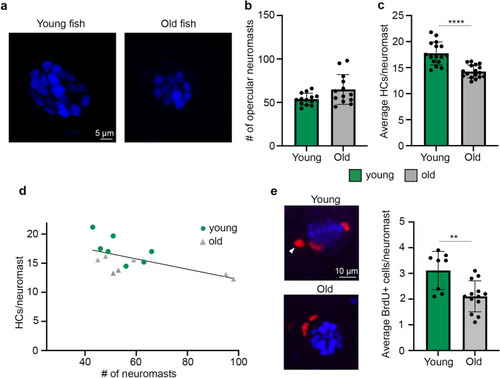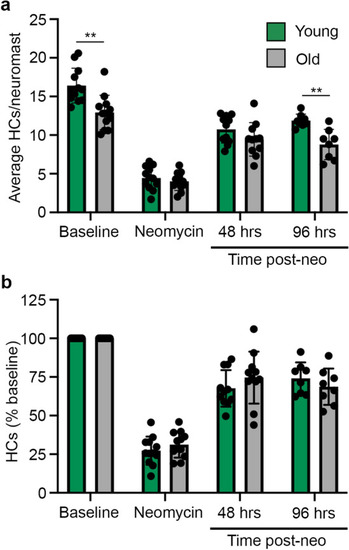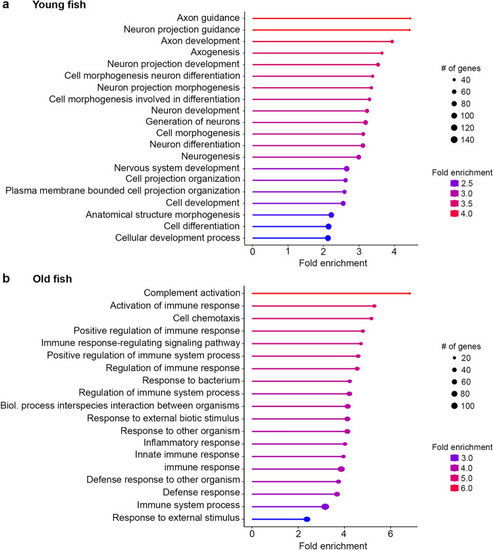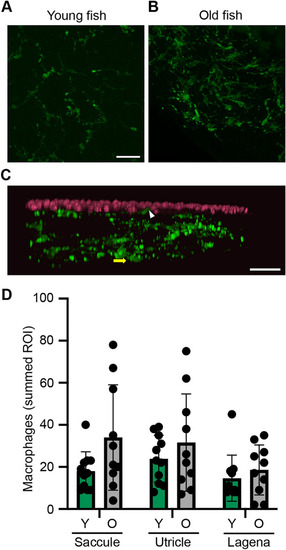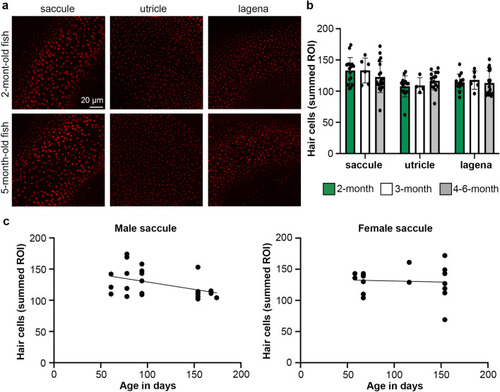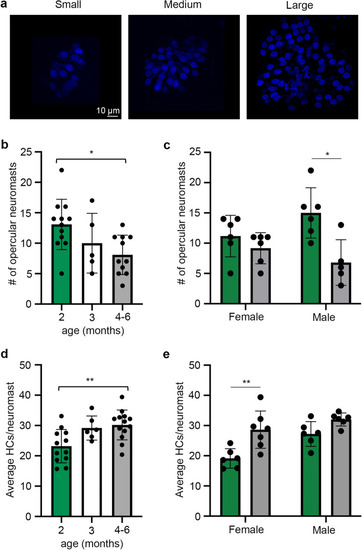- Title
-
Age-related changes in the zebrafish and killifish inner ear and lateral line
- Authors
- Coffin, A.B., Dale, E., Molano, O., Pederson, A., Costa, E.K., Chen, J.
- Source
- Full text @ Sci. Rep.
|
Young zebrafish have more inner ear hair cells. ( |
|
Hair cell density in zebrafish is not tightly correlated with fish length. ( |
|
Cell proliferation is higher in the ears of young zebrafish. ( |
|
Cell death doesn’t significantly change with age in the zebrafish ear. ( |
|
Young zebrafish have more hair cells and more dividing cells per lateral line neuromast. ( |
|
Lateral line regeneration does not change with age in zebrafish. ( |
|
Age-dependent differences in gene expression profiles. GO term analysis for biological process from bulk RNA-Seq data in ( |
|
Older fish have more inner ear macrophages. ( |
|
Age and sex effects in killifish inner ear hair cells. ( |
|
Neuromast number and size varies with killifish age. ( |

